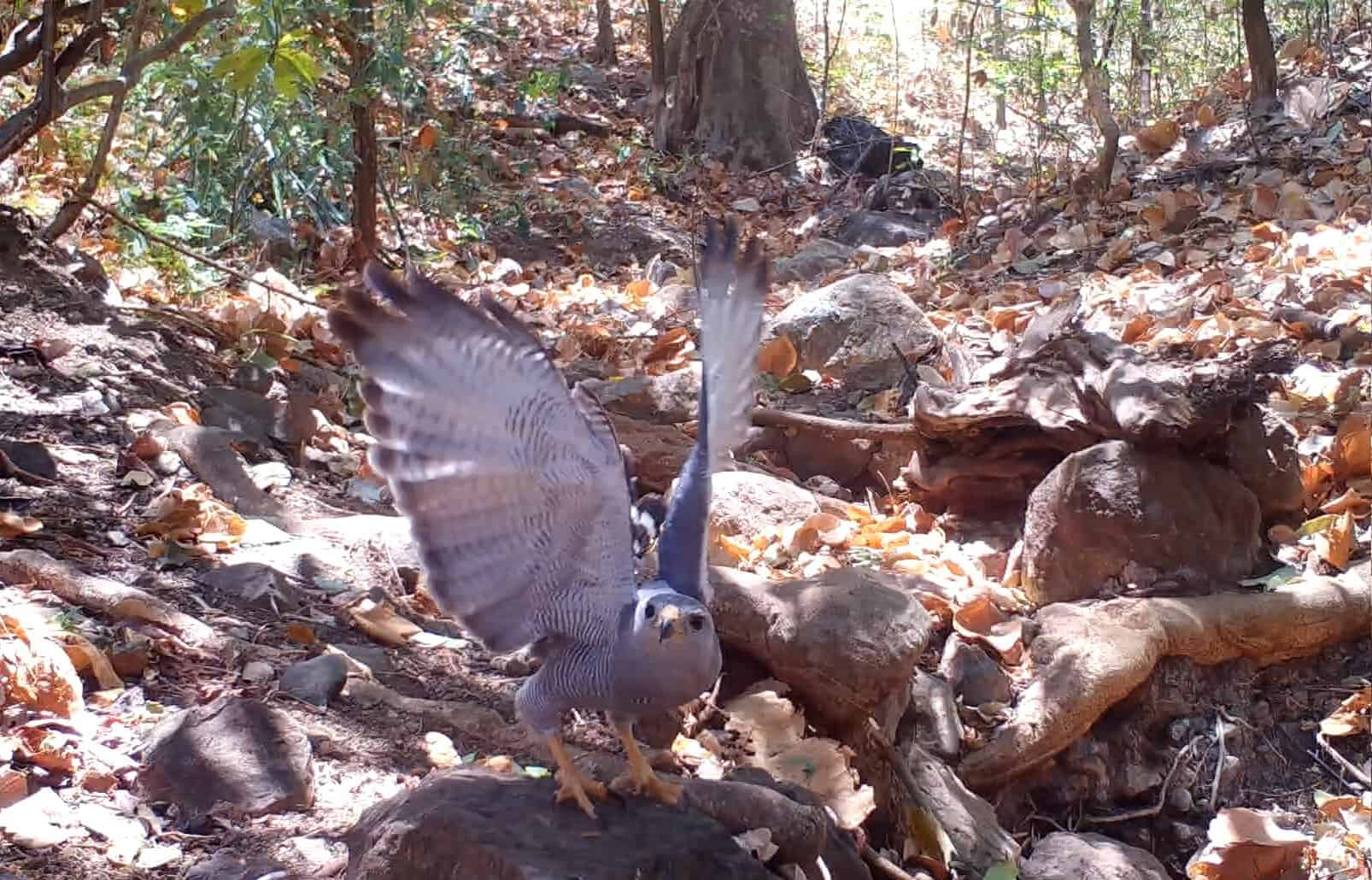Today we meet the gray hawk, a pretty bird of prey from the northern parts of Costa Rica with a nearly identical twin flying around the southern parts of the country. These birds enjoy eating animals with squirrel in their name, but hate wearing backpacks. I’ll explain.
The gray hawk (Buteo plagiatus) has the same name in Spanish, gavilán gris. I once thought these birds ranged across the northwestern section of the country, with another patch of the same species down near Osa. Well, I was wrong. It turns out that the southern population is a different species, the gray-lined hawk, with a different scientific name (Buteo nitidus).
It’s a similar deal as the gray-necked wood-rail, what was once considered a single species is split up into two distinct species with the only visible difference being difficult for the layperson to detect. In the case of these two gray hawks, the gray-lined hawk has a few more gray bars on its upperparts and a slightly wider white tail band.
One of my bird books says the end of the gray hawk’s territory is somewhere near Dominical. I was just driving to check cameras in Pérez Zeledón, and I spotted a gray hawk on a telephone pole just a few miles from Dominical. At fifty-something miles per hour I have no idea which species I saw.
The general life history of the gray hawk is that they prefer broken forest, scattered trees, and forest edges over solid forested areas. They like to ambush their prey from a perch in one of those scattered trees. The creatures they’re ambushing are lizards, frogs, snakes, small mammals, large insects, and occasionally birds. When it’s time to make the next generation of gray hawks, they build a nest in an evergreen tree and lay two-ish eggs.
When a species I’m writing about doesn’t have a ton of interesting information in my books or after some searching around on the internet, I’ll check to see what’s been published about them in scientific journals. I found two interesting nuggets about gray hawks in the literature. First, a few guys who were doing some bird watching tours in Costa Rica published the fact that they saw gray hawks eating a variegated squirrel and a squirrel cuckoo.
Apparently, those were newly documented prey items for gray hawks. I didn’t know you could get published for something like that, and it makes me want do some literature searches on all of the predator-prey activity I’ve recorded with my camera traps. The second article was specifically about the gray hawk’s dislike of wearing backpacks. Researchers were fitting gray hawks with backpacks with transmitters that allowed them to track them, and a decent number of individuals were able to break free ahead of schedule.
I see gray hawks frequently while checking camera traps and driving on the roads in Guanacaste. While I was working at a wildlife rehabilitation and release center, I had to learn how to handle birds of prey by quickly shooting gloved hand towards their feet and catching their legs between my fingers, leaving my other hand free to do whatever needed to be done. I’ll always remember that a gray hawk was the first species that I ever attempted this maneuver upon.
I’ve recorded gray hawks with my camera traps in exactly one scenario, a gray hawk landing near a source of water and either taking a drink or splashing all over the place taking a bath. I’ve included a few of my favorite gray-hawk-near-a-puddle clips in the video below.
About the Author
Vincent Losasso, founder of Guanacaste Wildlife Monitoring, is a biologist who works with camera traps throughout Costa Rica. Learn more about his projects on facebook or instagram. You can also email him at: vincent@guanacastewildlifemonitoring.com






